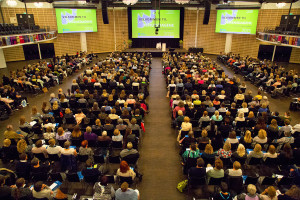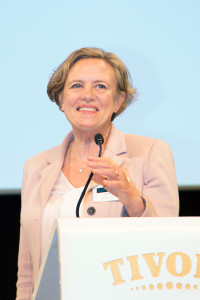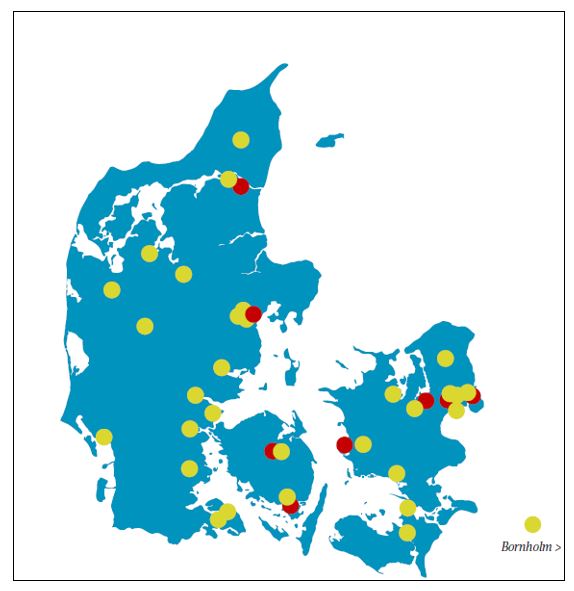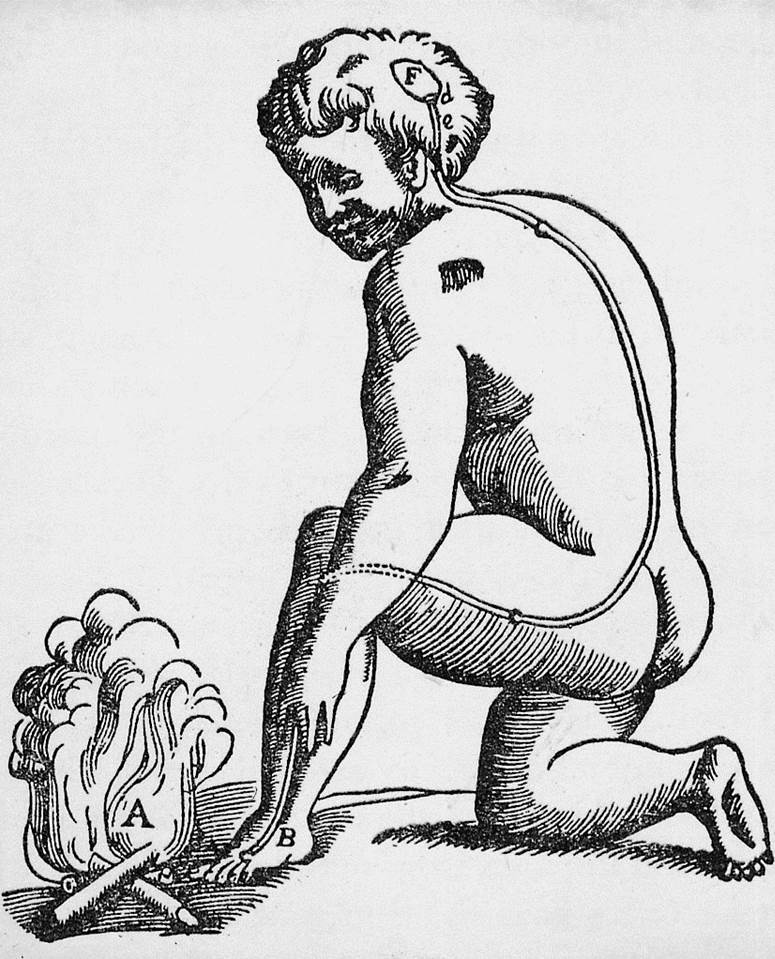Since the establishments of the first multidisciplinary memory clinics, based in neurology in Denmark more than 20 years ago, neurologists have taken increasing interest in diagnostic evaluation and follow-up of patients with dementia. In Denmark patients with dementia disorders are cared for geriatricians, neurologists and psychiatrists in collaboration with primary care. The role of geriatrics, psychiatry and neurology in the diagnostic evaluation and follow-up of patients vary from region to region, but dementia has become an important part of neurology in all departments in the country.
The Danish Dementia Research Centre (DDRC)
The Danish Dementia Research Centre (DDRC) is the leading centre for clinical dementia service, education and research in Denmark. Based on the multidisciplinary memory clinic established in the Department of Neurology at Rigshospitalet in 1995, the DDRC to-day also comprises a national info & education centre, a research centre, and a trial unit. The memory clinic receives a total of 1.000 referrals per year of patients with possible dementia from local districts as well as patients with rare disorders, uncertain diagnosis and familial disorders from other parts of Denmark. Funded by the Danish Ministry of Health, the info & education centre organizes networks, newsletters, teaching courses, conferences, apps and e-learning for professional carers, physicians and other practitioners nationwide. The biggest event is the annual multidisciplinary conference “DementiaDays” attended by 700-1.000 participants from the whole country (fig. 1).
 Since 1999 The Danish Dementia Research Centre has organized an annual multidisciplinary conference “DementiaDays”. Photo from DementiaDays 2015.
Since 1999 The Danish Dementia Research Centre has organized an annual multidisciplinary conference “DementiaDays”. Photo from DementiaDays 2015.
Our research activities headed by co-directors professor Steen G. Hasselbalch and senior neurologist Jørgen E. Nielsen, focus mainly on clinical and translational research in brain imaging, neuropsychology, neurogenetics, stem cells, bio-fluid markers and interventions in Alzheimer’s disease, fronto-temporal dementia, dementia with Lewy Bodies, Huntington’s disease, spino-cerebellar atrophies, and other neurodegenerative dementia disorders.
Network of memory clinics and the ADEX Alliance
The DDRC coordinates a network of the approximately 30 memory clinics in the country (fig. 2), a forum for harmonization of methods and exchange of ideas. The 7 memory clinics with research and trial experience form the recently established ADEX alliance (Alzheimer’s Disease Centres of EXpertise). Based on the experiences from the ADEX trial, the 7 memory clinics, 5 of which are based in neurology, have agreed on a common set of diagnostic criteria and outcome measures as well as training of staff, and are in a good position to conduct multidisciplinary intervention trials in the future.
Dementia research in Denmark
In the early 90’ies Professor Per Kragh-Sørensen and his team in the dept. of psychiatry in Odense conducted a large epidemiological study on the prevalence and incidence of dementia in Odense city, part of the Eurodem collaborative studies (1). Professor Kaare Christensen, University of Southern Denmark has conducted series of epidemiological studies based on his oldest old cohort and the Danish twin registry, and his recent finding of improved cognitive functioning in people older than 90 years has attracted significant attention (2).
Denmark has unique resources for epidemiological research due to the access to nationwide patient registries with demographic information and information on hospital contacts and resource utilization in primary and secondary care. For example, based on validation of dementia information in the registries the DDRC has been able to document a significant under-diagnosis of dementia in general, and an over-diagnosis in the young (3,4). By coupling information from hospital registries to prescription databases, DDRC has performed pharmaco-epidemiological studies in patients with dementia (5,6). For monitoring the quality of diagnostic evaluation of dementia, a nationwide clinical quality registry was initiated in 2016, based on the quality registry which has collected data from memory clinics in the Capital region of Denmark since 2007 (7).
A significant part of the DDRC research is based on neuroimaging, based on collaboration with world class PET and MRI research centres. The DDRC has extensive experience in designing trials with complex interventions and has conducted two large multicentre randomized controlled trials (RCT): the DAISY (Danish Alzheimer Intervention Study), a RCT on early psychosocial counselling and support in Alzheimer’s disease (330 patients) (8), and the ADEX (Preserving quality of life, physical health and functional ability in Alzheimer’s disease: The effect of physical exercise), a RCT on aerobic exercise in Alzheimer’s disease (200 patients) (9). The use of information and communication technology in people with dementia is an evolving field of research.
Denmark is also known for a unique large pedigree autosomal dominant neurodegenerative disease frontotemporal dementia linked to chromosome 3 (FTD-3). The mutation CHMP2B mutation causing the disease was discovered in 2005 (10).
A review of basic research in the field of Alzheimer’s disease is beyond the scope of this paper. However several Danish neuroscientists are active in the field of molecular research, experimental behavioral studies, and drug development.
National dementia strategy
The Danish Minister of Health and the Elderly, Mrs. Sophie Løhde, together with other members of Parliament, has allocated funding of € 63 mill. for a new national dementia strategy to be launched in the fall of 2016. Hopefully, the new national strategy will include specific plans for improvements of the quality of diagnosis and follow-up and for research, based on the unique resources for research in Denmark.
Visit DDRC at http://uk.videnscenterfordemens.dk/
Gunhild Waldemar is professor of neurology, coordinating professor at the Neuroscience Centre, at Rigshospitalet, University of Copenhagen, and director of the Danish Dementia Research Centre. She was a member of the transitional task force to merge EFNS and ENS and create EAN, is currently a member of the EAN Liaison Committee and of the management committee of the EAN scientific panel on dementia and cognitive disorders. She also serves on the Medical and Scientific Advisory Panel of Alzheimer’s Disease International (ADI) and on the scientific advisory board of Alzheimer Europe, and she chairs the research committee of the Lundbeck Foundation Board.
References:
- Andersen K, Nielsen H, Lolk A, Andersen J, Becker I, Kragh-Sørensen P. Incidence of very mild to severe dementia and Alzheimer’s disease in Denmark: the Odense Study. Neurology. 1999 Jan 1;52:85-90.
- Christensen K, Thinggaard M, Oksuzyan A, Steenstrup T, Andersen-Ranberg K, Jeune B, McGue M, Vaupel JW. Physical and cognitive functioning of people older than 90 years: a comparison of two Danish cohorts born 10 years apart. Lancet 2013; 382:1507-13.
- Phung TK, Waltoft BL, Kessing LV, Mortensen PB, Waldemar G. Time trend in diagnosing dementia in secondary care. Dement Geriatr Cogn Disord 2010; 29:146-153.
- Salem LC, Andersen BB, Nielsen TR, Stokholm J, Jørgensen MB, Rasmussen MH, Waldemar G. Overdiagnosis of dementia in young patients – a nationwide register-based study. Dement Geriatr Gogn Disord 2012;34:292-299.
- Jensen-Dahm C, Gasse C, Astrup A, Mortensen PB, Waldemar G. Frequent use of opioids in patients with dementia and nursing home residents-A study of the entire elderly population of Denmark. Alzheimers Dement 2015;11:691-9.
- Nørgaard A, Jensen-Dahm C, Gasse C, Hansen HV, Waldemar G. Time Trends in Antipsychotic Drug Use in Patients with Dementia: A Nationwide Study. J Alzheimers Dis. 2015;49:211-20.
- Johannsen P, Jørgensen K, Kørner A, Elmo EG, Lauesen LB, Utzon J. Development of a dementia assessment quality database. Aging Ment Health. 2011 Jan;15:40-6.
- Waldorff FB, Buss DV, Eckermann A, Rasmussen ML, Keiding N, Rishøj S, Siersma V, Sørensen J, Sørensen LV, Vogel A, Waldemar G. Efficacy of psychosocial intervention in patients with mild Alzheimer’s disease: the multicentre, rater blinded, randomised Danish Alzheimer Intervention Study (DAISY). BMJ 2012;345:e4693.
- Hoffmann K, Sobol NA, Frederiksen KS, Beyer N, Vogel A, Vestergaard K, Brændgaard H, Gottrup H, Lolk A, Wermuth L, Jacobsen S, Laugesen LP, Gergelyffy RG, Høgh P, Bjerregaard E, Andersen BB, Siersma V, Johannsen P, Cotman CW, Waldemar G, Hasselbalch SG. Moderate-to-High Intensity Physical Exercise in Patients with Alzheimer’s Disease: A Randomized Controlled Trial. J Alzheimers Dis. 2015;5:443-53.
- Skibinski G, Parkinson NJ, Brown JM, Chakrabarti L, Lloyd SL, Hummerich H, Nielsen JE, Hodges JR, Spillantini MG, Thusgaard T, Brandner S, Brun A, Rossor MN, Gade A, Johannsen P, Sørensen SA, Gydesen S, Fisher EM, Collinge J. Mutations in the endosomal ESCRTIII-complex subunit CHMP2B in frontotemporal dementia. Nat Genet. 2005 Aug;37:806-8.







